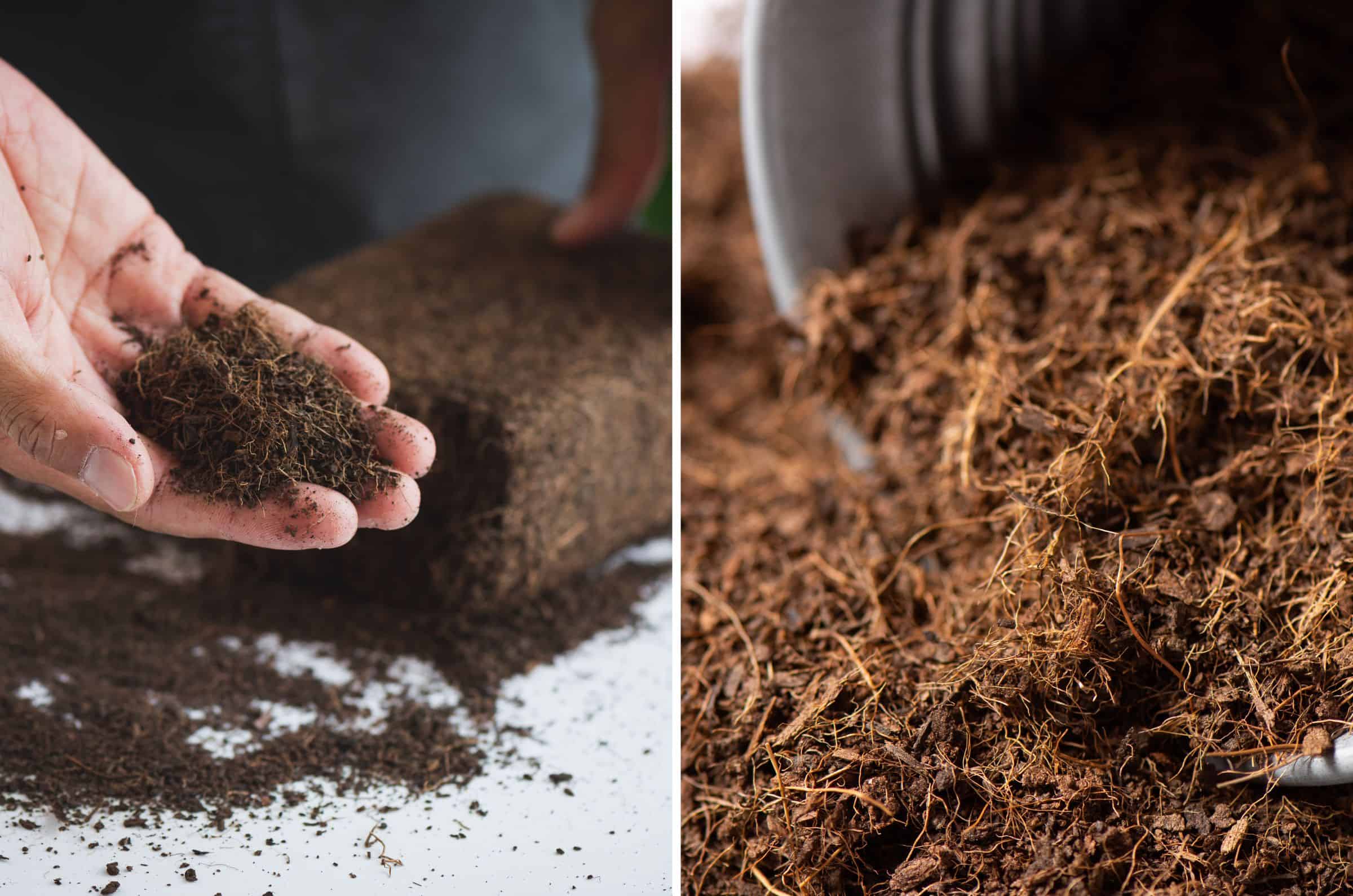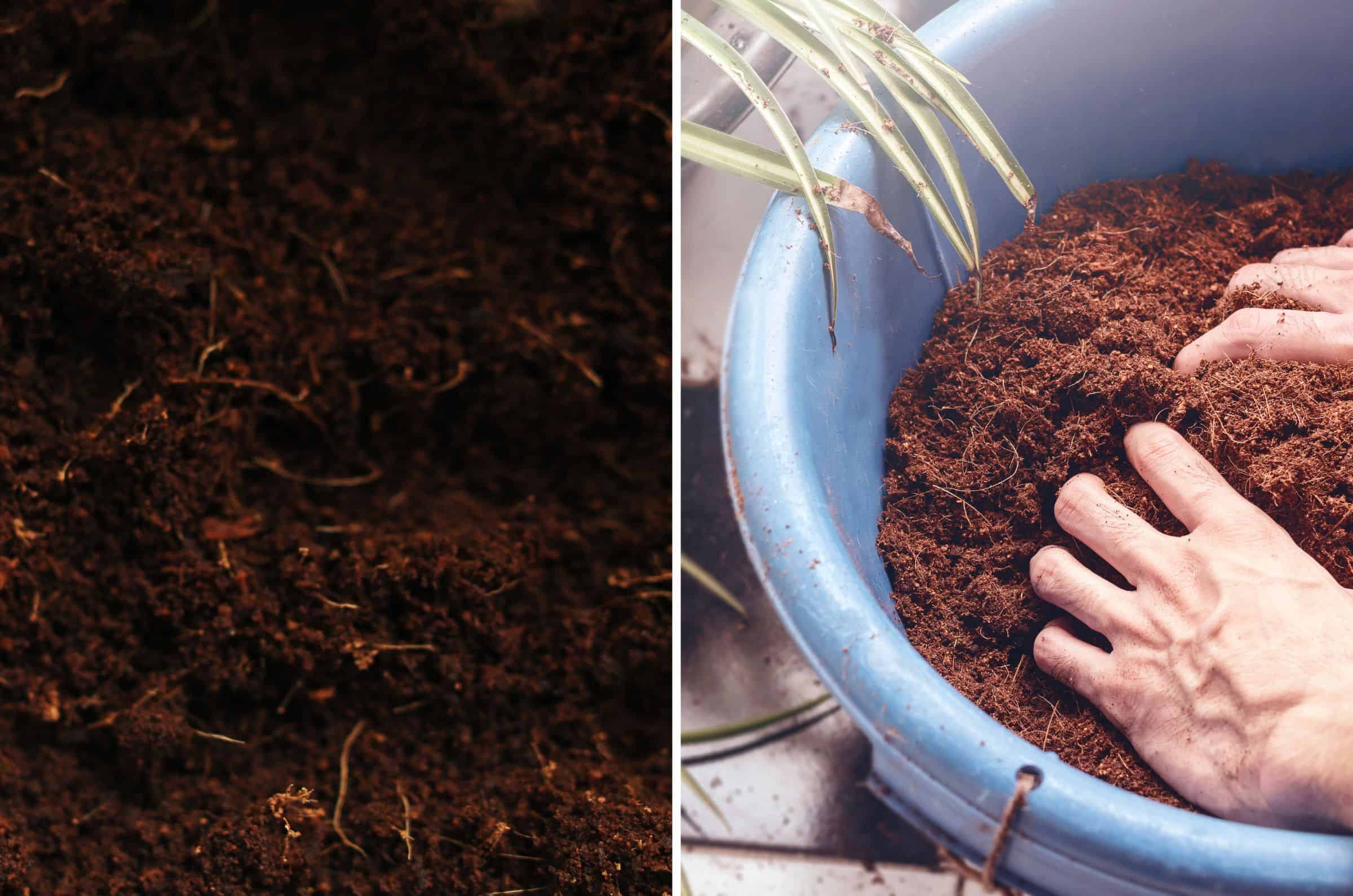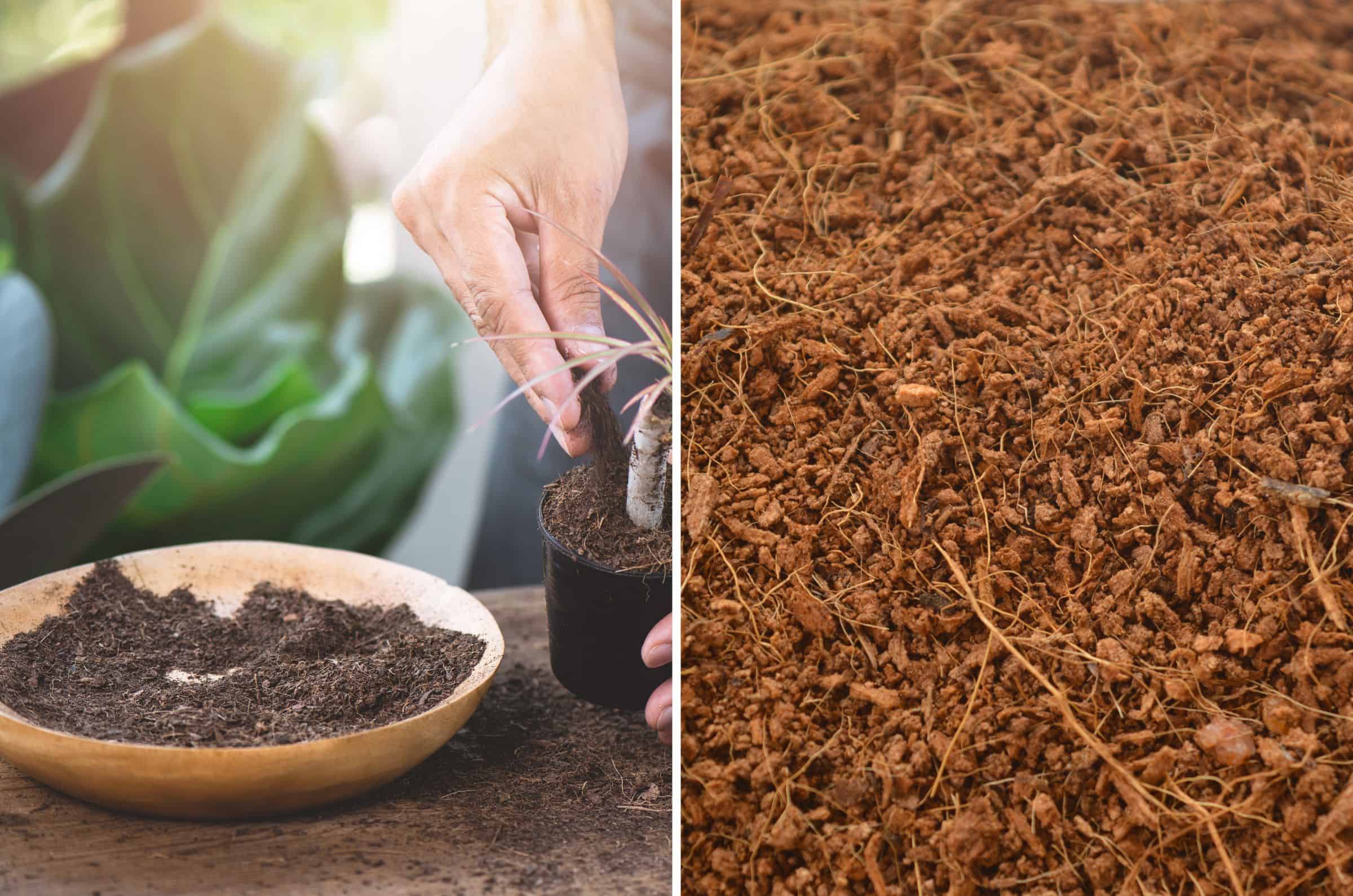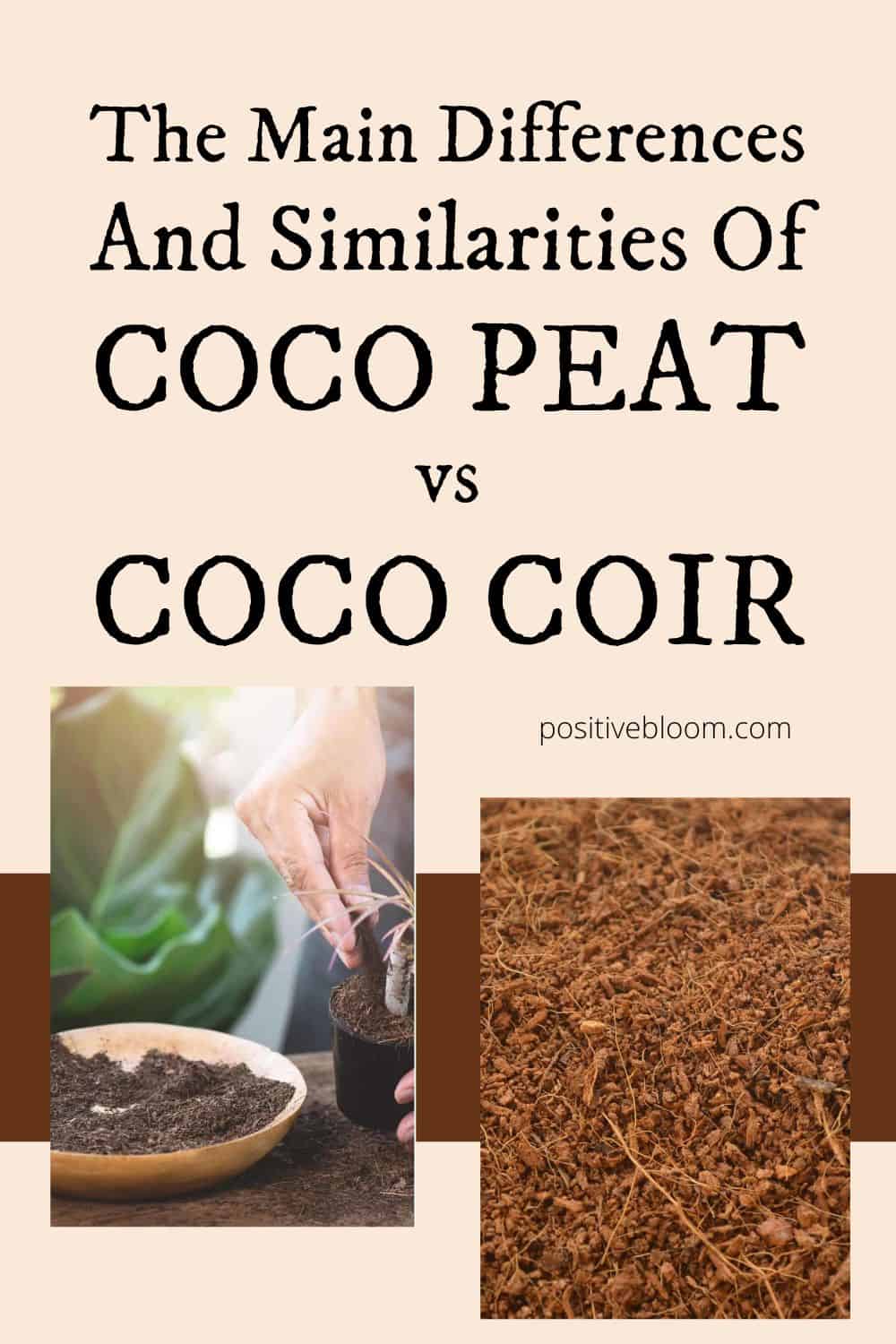Horticulture has many terms that are usually used interchangeably, but don’t always mean the same thing.
Loads of people all around the world love coconuts, but they also have great importance in horticulture. Coco peat vs coco coir often sparks debate amongst gardeners, and many have asked if they mean the same thing.
I wrote this article to resolve the confusion, so keep reading to find out everything you need to know.
Let’s get started!
Coco Peat vs Coco Coir: The Main Differences
Although the terms coco coir and coco peat are often used interchangeably, and many people think they refer to the same thing, they are different! The difference is in raw material, water absorption, nutritional value, color, and pH level.
Let’s get into the details!
Raw Material
When you are looking at a coconut, the first thing you will notice is the husk. The next part is the edible section of the coconut.
Scientifically speaking, this fruit has three parts: exocarp, mesocarp, and endocarp. The edible part is referred to as the endosperm.
Why is this important? Coconut husks are used to make coco peat, which is frequently utilized as a growing medium.
Coconut fibers are used to make coco coir, which has a wide range of uses, including as a potting mix substance.
Water Drainage And Retention
Plants have different requirements regarding aeration, water drainage, and water retention.
If you grow plants that require more water in their potting soil, then coco peat is what you need. It retains more water and makes the soil more compact. Still, soil with coco peat isn’t too compact, and you don’t need to worry that it will retain too much water.
On the other hand, coco coir makes the soil porous and enables the plant roots to breathe. It also aids drainage, so it’s perfect for plants that need less water in their soil.
Nutritional Value
Coco coir doesn’t retain water, which makes it less susceptible to mold. It also has better nutritional value than coco peat.
Scientifically speaking, these two differ in Cation exchange capacity (CEC); coir absorbs more nutrients, such as potassium, magnesium, and calcium.
Color & Texture
When you put coco coir and coco peat next to each other, you’ll notice that the coir is darker, and most frequently brown.
On the other hand, peat is light brown to white in color.
When you touch the coco peat, you’ll notice it’s soft, whereas the coir is more fibrous.
Difference In pH Level
They also differ in acidity. Peat is neutral, so the addition of limestone won’t be necessary.
On the other hand, coir is considered to be less acidic.
Both materials make excellent soil amendments and can be used for a wide variety of plants.
Coco Peat vs Coco Coir: Similarities
Coco peat and coir are both a byproduct of the coconut industry.
Even though the two differ in terms of water retention and drainage, you can use both to improve drainage and aeration.
Both materials work great as hydroponic growing mediums (soilless mixes) and soil conditioners, and are used for seed starting.
Why is that? I mentioned that coco peat doesn’t retain too much water. When compared to other materials, such as peat moss, it won’t make the soil too compact.
Probably the biggest benefit of both materials is that they are eco-friendly and sustainable. A lot of people claim that they aren’t eco-friendly and that coir production destroys the environment.
When it comes to the sustainability of materials, coco peat is more sustainable than the more popular material, peat moss.
Coconut performs significantly better than peat moss as coconuts are quickly regenerated. It takes way longer to restore peat bogs.
Coconut coir and coco peat make an excellent addition to potting mix, and aid erosion control.
These materials are rich in carbon, so if you are composting, adding these materials is a great idea.
If you need mulch for your plants, then you can use one of these materials as both have the same performance.
If you add a layer of coco fiber to the soil, you’ll prevent nasty fungus gnats from penetrating deeper into the soil to lay their eggs. This material is well-known for its deterrence to pests and diseases if used sterile.
The Cons Of Coconut Coir And Coco Peat
We have seen the benefits of coco coir and peat, but nothing is perfect; especially not in the gardening world!
If you are a beginner gardener, then using products made of fiber and the husks of coconuts may make getting the pH level right quite difficult.
These materials are neutral or slightly acidic, so if you have some plants that require a more alkaline soil mix, coconut products aren’t the best idea.
When compared to materials with similar characteristics, such as perlite and vermiculite, coconut products may seem expensive.
I mentioned that coco coir contains potassium, which is good unless you grow plants that may die if the potassium level is too high.
Additionally, higher concentrations of potassium in your garden soil may impact the absorption of other vital nutrients.
Although coco peat is a sterile plant material, chemical treatment can make it more likely to host pathogens and pests. You must constantly check your coco peat and get rid of any affected plants you find.
If your plant material has been chemically treated, cleaning it well before utilizing it is crucial. For example, you can submerge it in bleach before use or reuse it. Make sure to check if the material has been chemically treated. If you are buying it from Amazon, check the reviews.
FAQs
Are coco coir and peat moss the same?
No, coco coir and peat moss are not the same things. The interior parts of the coconut (the pith) are processed to create coir bricks or coco soil. Coconuts’ fibrous husks are degraded or pulverized to create a substance that resembles peat moss in terms of structure. Coconut fiber is primarily produced in India or Sri Lanka. Coconut husk would otherwise end up in a landfill if it’s not submitted for further processing.
Peat moss, on the other hand, is derived from peat bogs (wetlands covered with decayed sphagnum moss). Canada is the primary source of peat moss in the USA.
Can coco coir be used in place of peat moss?
Both coco coir and sphagnum peat moss have many benefits and uses. Coco coir is similar to peat moss and can be used as an alternative. Sometimes, coco coir is a better choice than peat moss. For example, if you grow plants that prefer more acidic soil, it would be better to use coir. However, before using either of these two plant materials, I recommend testing your soil to avoid issues such as inhibiting plant growth.
Some plants, such as succulents and orchids, require a lot of soil drainage, so coir is a better choice. On the other hand, using only coco coir may be bad for plants that need more water in the soil. In this case, I recommend going with Canadian plant material.
Wrapping Up
Many plant materials are used in the gardening world, and each has its own benefits. Coconuts are a delicious fruit, and their inedible parts are used as soil conditioners, seed-starting soil, and hydroponic growing medium.
Coco peat vs coco coir is often discussed because many growers use both terms to refer to the same thing.
Now that you know the difference, you can choose the appropriate material for your plants and enjoy watching them flourish.
Until next time
Like this post? Share or pin it for later!




